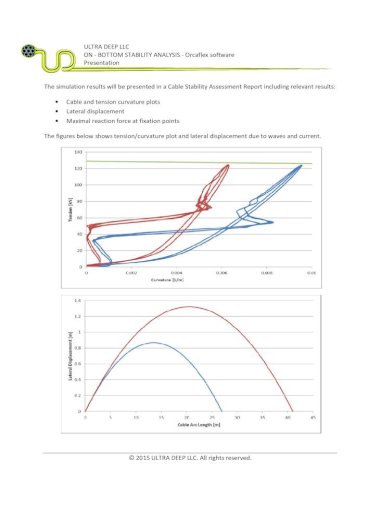

A more well-established form of mitigation with proven industry track record (such as riser fairings, helical strakes etc.) that are better suited to counter severe anticipated VIV. One such mitigation is the use of alternating slick and buoyant joints. If VIV analysis indicates a likelihood of severe VIV fatigue damage, VIV suppression devices will be considered as a recommendation for risk mitigation. In the presence of high surface currents with significant shear in the current profile, VIV results are often expected to be conservative. Riser joint inspections after riser retrieval can be used to manage risk of subsequent riser failure however, fatigue damage in the conductor is more difficult to manage from this perspective. The consequences of drilling riser VIV are not just riser fatigue the vibrations also cause damage to the conductor. The design SN curve for the drilling riser pipe as well as conductor & casing fatigue critical locations (welds & connectors) is considered for fatigue analysis. Where appropriate, the long-term fatigue life is evaluated by factoring the individual current profile fatigue life with probability of occurrence (Miner’s rule of damage addition). The long-term and extreme current data is used to determine susceptibility of the system to VIV. The soil properties will need to be adjusted to represent the Eigenvalue solutions for small displacement response of the conductor. Modal analysis is conducted using the finite element model to determine the natural frequency response of the entire riser and conductor system along with soil properties.

VIV Fatigue Analysis (Currents) VIV analysis is conducted using Shear7 and its automated links to OrcaFlex. Example Flex Joint and Stroke Response for 300 kips Overpull at Base of LMRP, shown above. Final minimum and maximum tensioning recommendations will be adjusted to satisfy the requirements of riser recoil analysis results, when applicable.Įxample Tension Requirements with Mud Weight, shown above. This recommended tension will also be used for all subsequent analysis.

Alternatively, this will be calculated based on pipe geometries of main and auxiliary (C&K, hydraulic and boost) lines. Measured mass and weight data will be used if available.The internal fluid density considered for analysis will range from seawater (8.55 ppg) to maximum mud weight used.Tension requirements will be determined as per API RP 16Q code.Tension Requirement Assessment Tension requirement will be determined using the following: Typical Drilling Riser Analysis Procedure shown above. Example Riser Stack-up Configuration for Deepwater. The riser configuration development is expected to be iterative and the flow chart and will follow the most recent API and DNV codes. The base case will be compared with available buoyant and slick joints available on the rig and an alternative optimum arrangement proposed if deemed necessary. Riser Joint Stack-up Modelling and Preliminary Analysis The base case riser joint stack-up provided by Company will be used in STA Excel and OrcaFlex data files. Analysis methodology to be used for analysis will also be presented in the document.The units used will provided and client confirmation will be requested.For missing data, a template will be provided to the client defining sample data to help gather additional information required.A design basis will be prepared with the following:
ORCAFLEX TUTORIAL SOFTWARE
Resources of engineers and software are assigned to the schedule. STA then generates a task list and schedule for completion. DRILLING RISER, WELLHEAD & CONDUCTOR ANALYSIS METHODOLOY (Semi/Drillship) Data Review and Design Basis STA will receive data for each project from Company together with a scope of work specific to that project.


 0 kommentar(er)
0 kommentar(er)
